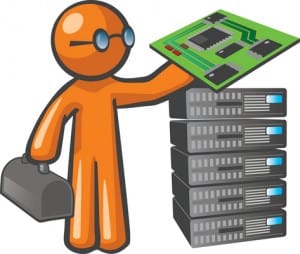Software-as-a-Service (SaaS) has revolutionized the way businesses operate. But alongside its benefits, SaaS brings with it potential threats. When software and data are online, they’re more vulnerable to attacks. One of the latest threats to move from endpoint devices to the cloud is ransomware.
Between March and May of 2023, SaaS attacks increased by over 300%. A study in 2022 by Odaseva found that 51% of ransomware attacks targeted SaaS data.
What is SaaS ransomware?
SaaS ransomware is also known as cloud ransomware. It’s malicious code designed to target cloud-based applications and services. These include services like Google Workspace, Microsoft 365, and other cloud collaboration platforms. Here are some tips to defend your business from SaaS ransomware.
Educate your team
Start by educating your employees about the risks of SaaS ransomware. Include how it spreads through phishing emails, malicious links, or breached accounts. Teach them to recognize suspicious activities and report any unusual incidents immediately.
Enable multi-factor authentication (MFA)
MFA is an essential layer of security. Enabling MFA reduces the risk of unauthorized access. This is true, even if a hacker compromises an account’s login credentials.
Regular backups
Frequently backing up your SaaS data is crucial. Having up-to-date backups ensures that you can restore your files. You won’t need to pay the attacker’s ransom demands and you’ll get your business back up and running faster.
Deploy advanced security solutions
Consider using third-party security solutions that specialize in protecting SaaS environments.
These solutions can provide many benefits including:
• Real-time threat detection
• Data loss prevention
• And other advanced security features
Apply the principle of least privilege
Limit user permissions to only the necessary functions. By doing this, you reduce the potential damage an attacker can do if they gain access.
Keep software up to date
Ensure that you keep all software up to date. Regular updates close known vulnerabilities and strengthen your defense.
Track suspicious account activity
Put in place robust monitoring of user activity and network traffic. Suspicious behavior can be early indicators of an attack. One example to watch for is several failed login attempts. Another is access from unusual locations.
Develop an incident response plan
Prepare and practice an incident response plan. It should outline the steps to take in the event of a ransomware attack. A well-coordinated response can mitigate the impact of an incident. It can also aid in faster recovery. The sooner your team can respond, the faster business gets back to normal.




